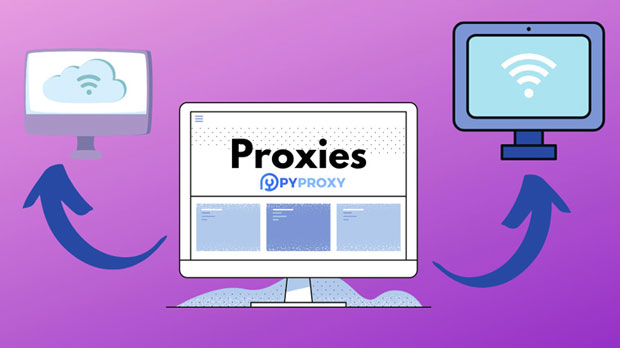ProxyEmpire vs PYProxy, which one is suitable for large-scale market research?
When choosing a proxy provider for large-scale market research, two prominent options come to mind: ProxyEmpire and PYPROXY. Both offer a variety of features tailored to different needs, but which one is better suited for extensive data collection and analysis? This article will dive deep into comparing these two services, evaluating their performance, scalability, pricing, and overall functionality. By the end, you will have a clearer understanding of which proxy service aligns best with your market research needs. 1. Overview of ProxyEmpire and PYProxyBefore jumping into the detailed comparison, it's important to understand the core features and services provided by ProxyEmpire and PYProxy.ProxyEmpire is known for offering a robust selection of proxies with a strong focus on high-speed and anonymity. It supports residential, data center, and mobile proxies, making it a versatile choice for market research, web scraping, and other data-intensive tasks. Its broad global coverage and reliable infrastructure make it an appealing option for those needing large-scale data gathering across multiple regions.On the other hand, PYProxy positions itself as a more affordable solution, with a simpler proxy setup. While it may not have the same extensive proxy pool as ProxyEmpire, PYProxy focuses on providing straightforward services with quick setup and easy integration for businesses with more moderate needs.2. Key Features ComparisonWhen comparing ProxyEmpire and PYProxy, it's crucial to analyze the key features that directly impact the success of large-scale market research. These include proxy variety, speed, geo-targeting capabilities, and ease of use.2.1 Proxy Variety and CoverageProxyEmpire stands out for its diverse proxy offerings. Its pool includes millions of residential IPs, thousands of data center proxies, and a wide range of mobile proxies. This variety gives market researchers the flexibility to switch between different proxy types depending on the research requirements. For instance, residential proxies can be ideal for tasks where anonymity is critical, while data center proxies may be more suited for bulk data collection at high speeds.PYProxy, however, offers a more limited selection of proxies. Its focus primarily lies in data center proxies, with fewer options for residential or mobile proxies. For businesses that need geo-targeted data from a wide range of locations or require dynamic IP switching, ProxyEmpire would likely be the better choice. However, if the research focus is primarily on less complex tasks, PYProxy could still suffice.2.2 Speed and PerformanceIn market research, speed and performance are essential for handling large datasets in real-time. ProxyEmpire excels in this area, offering fast connection speeds, minimal downtime, and high availability across its proxy pool. Their proxies are optimized for both stability and speed, ensuring that researchers can conduct large-scale data gathering without interruptions.While PYProxy offers decent speeds, it tends to lag behind ProxyEmpire in terms of performance consistency. It may be suitable for smaller-scale market research projects where speed isn't a critical factor. However, for more complex tasks requiring frequent IP rotations or large-scale data scraping, ProxyEmpire’s infrastructure will better support high-demand activities.2.3 Geo-Targeting CapabilitiesGeo-targeting is essential for obtaining location-specific data, a key aspect of market research. ProxyEmpire offers extensive geo-targeting options, with proxies available in over 150 countries. This is crucial for research that needs to capture localized market trends, consumer behavior, or competitor activity in different regions.PYProxy, in comparison, has a more limited geo-targeting reach. While it covers several major countries, it doesn’t offer the same depth of geographic options as ProxyEmpire. For large-scale market research involving global regions, ProxyEmpire would provide much better coverage and flexibility.2.4 Ease of Use and IntegrationEase of use is a significant factor when considering a proxy provider, especially for teams without technical expertise. PYProxy offers a simple interface with straightforward setup processes, making it easy for businesses to start using proxies quickly. Its integration process is user-friendly, allowing businesses to get up and running without a steep learning curve.ProxyEmpire, while slightly more complex due to its variety of proxy options, still offers a well-documented setup and support system. For larger businesses with more specific needs or those requiring advanced features like session control and proxy rotation, ProxyEmpire’s interface can be advantageous, despite being more technical. 3. Scalability and Flexibility for Large-Scale Market ResearchOne of the most critical factors for market research is scalability. Research often grows in scope and complexity over time, and the proxy provider must be able to scale accordingly.ProxyEmpire’s vast pool of proxies and its focus on high performance make it a highly scalable solution for businesses that plan to grow their data collection efforts. It provides the flexibility needed to handle millions of requests daily without compromising on performance. Additionally, its variety of proxy types and locations makes it an adaptable choice for changing research needs.In contrast, PYProxy may face limitations as businesses scale their market research efforts. While its proxy network may be sufficient for smaller projects, it may struggle with the demands of large-scale operations. The lack of residential and mobile proxies, combined with its more basic infrastructure, means that PYProxy might not be the best choice for projects that require flexibility and long-term scalability.4. Pricing StructurePricing is often a decisive factor when choosing a proxy provider, especially for companies working with tight budgets or looking to manage costs effectively.ProxyEmpire tends to be on the higher end of the pricing spectrum due to its comprehensive range of services and advanced features. However, the investment is justified by the high quality of service and scalability, which can provide a significant return on investment (ROI) for large-scale market research projects.PYProxy, on the other hand, offers a more budget-friendly pricing model. For businesses looking to run smaller-scale market research or those with limited proxy usage, PYProxy can offer a cost-effective solution. However, for large-scale operations that require robust features, ProxyEmpire’s higher costs may provide better value in the long term.5. Conclusion: Which Proxy is Best for Large-Scale Market Research?For large-scale market research, ProxyEmpire stands out as the more suitable choice due to its vast proxy pool, superior performance, comprehensive geo-targeting capabilities, and scalability. Its variety of proxies allows for more flexibility and efficiency in gathering data from diverse regions and handling complex research tasks. While it comes with a higher price tag, the value it provides in terms of performance and scalability makes it a worthy investment.PYProxy, though more affordable and easier to use, is better suited for businesses with less demanding needs or smaller projects. Its limited proxy options and performance may not be sufficient for extensive, large-scale market research.Ultimately, if your business is committed to comprehensive, high-quality market research on a large scale, ProxyEmpire is the more robust solution. However, if your research needs are more straightforward and cost is a primary concern, PYProxy may be an acceptable alternative.
2025-02-25

























































